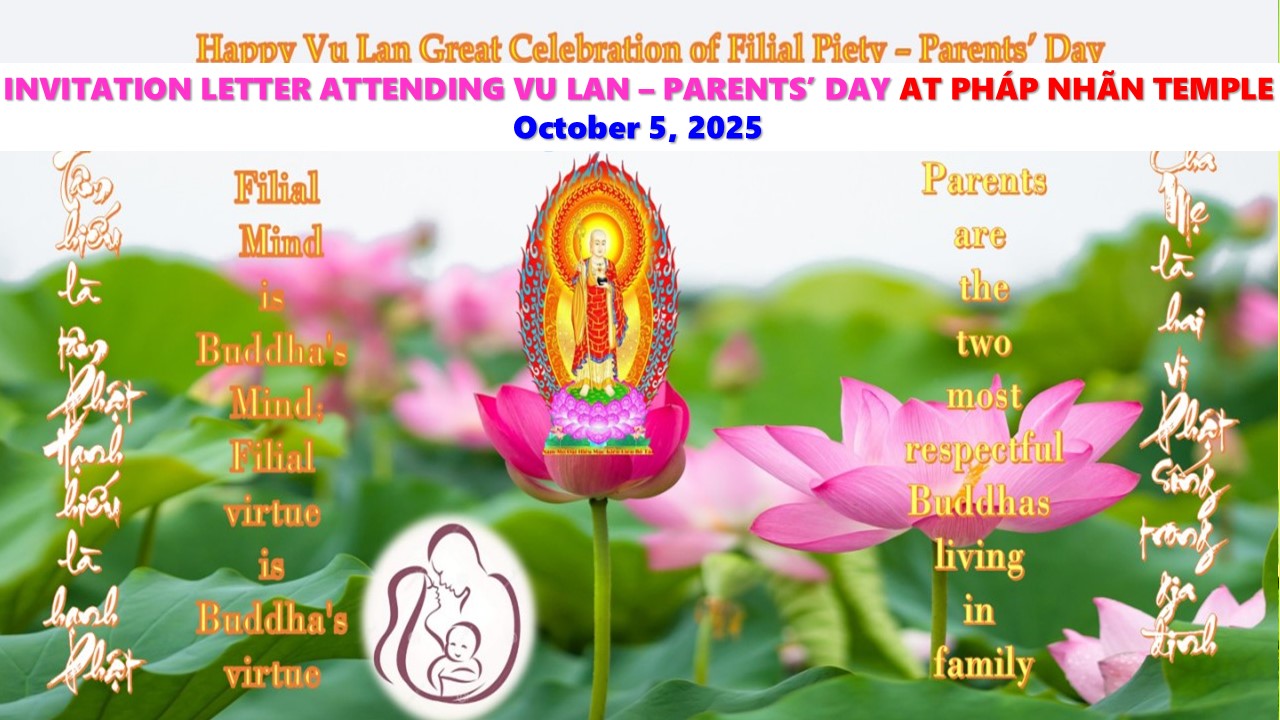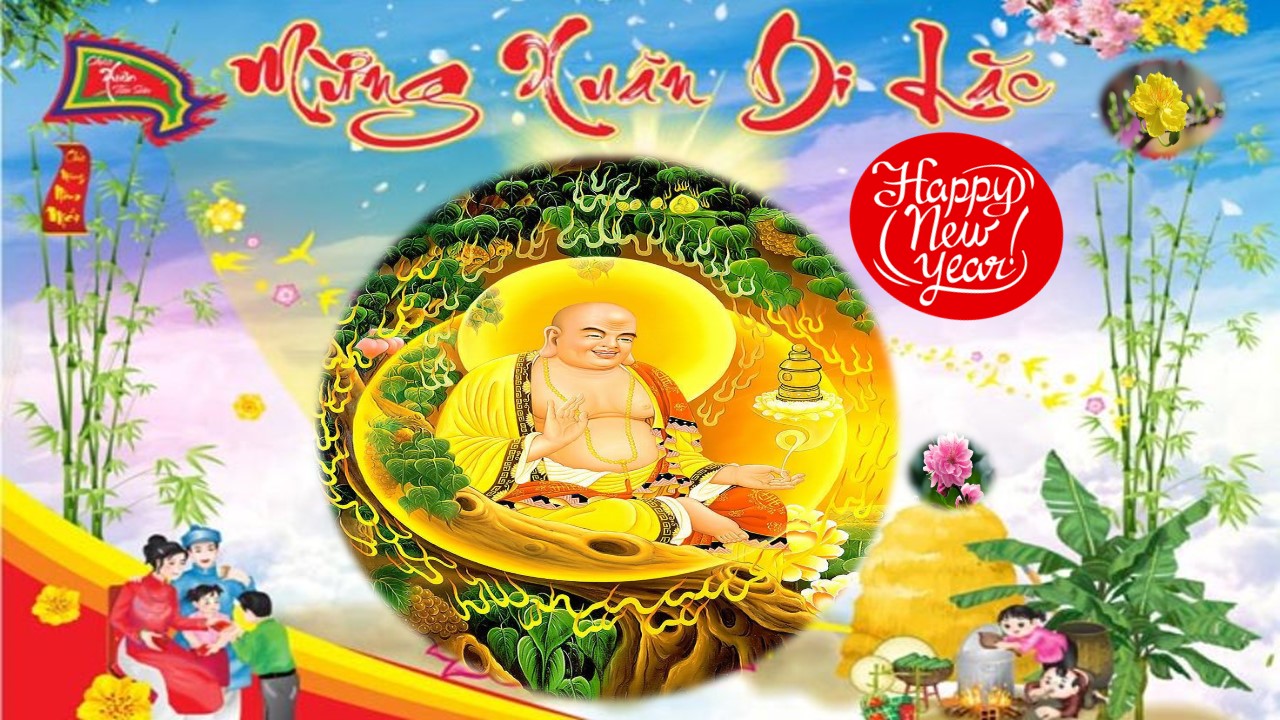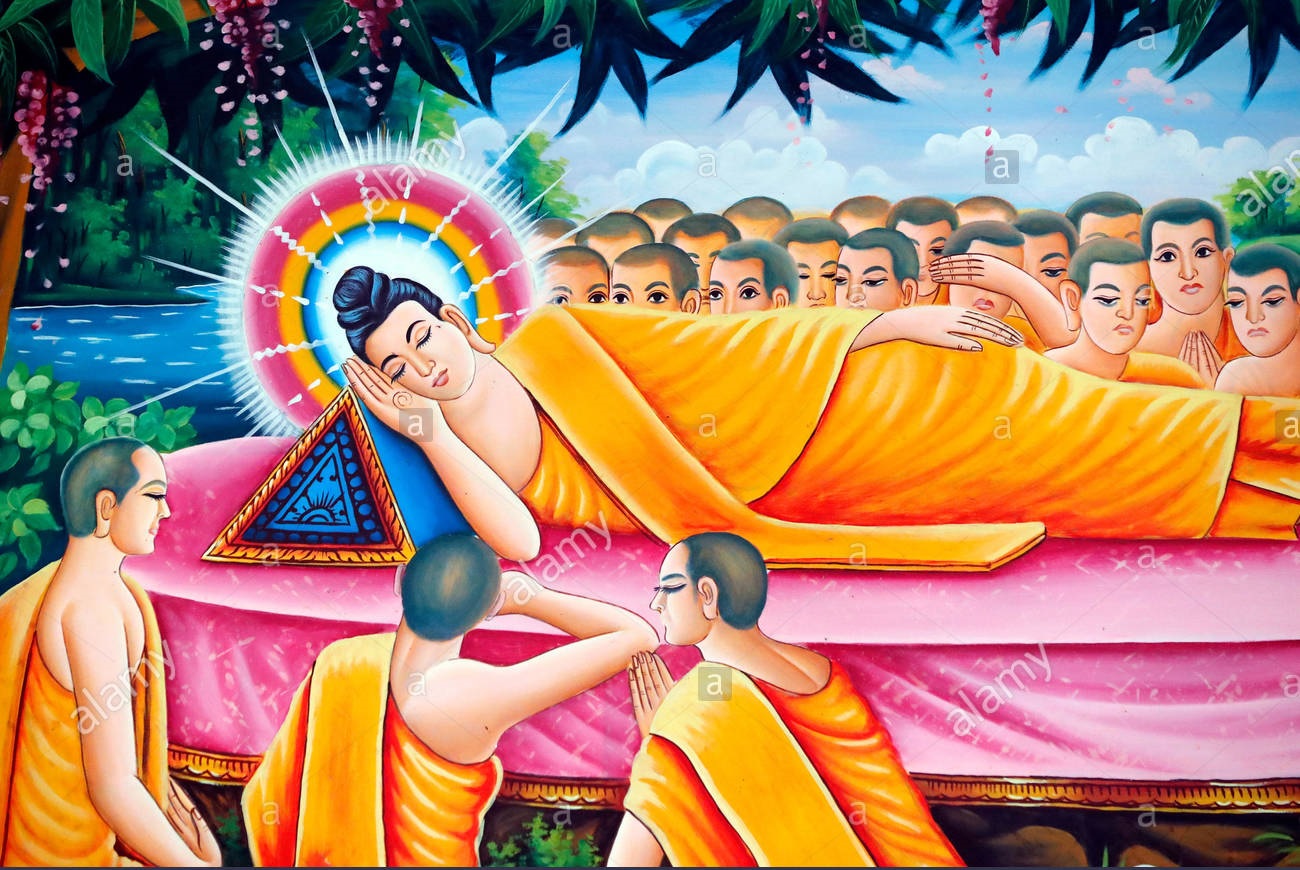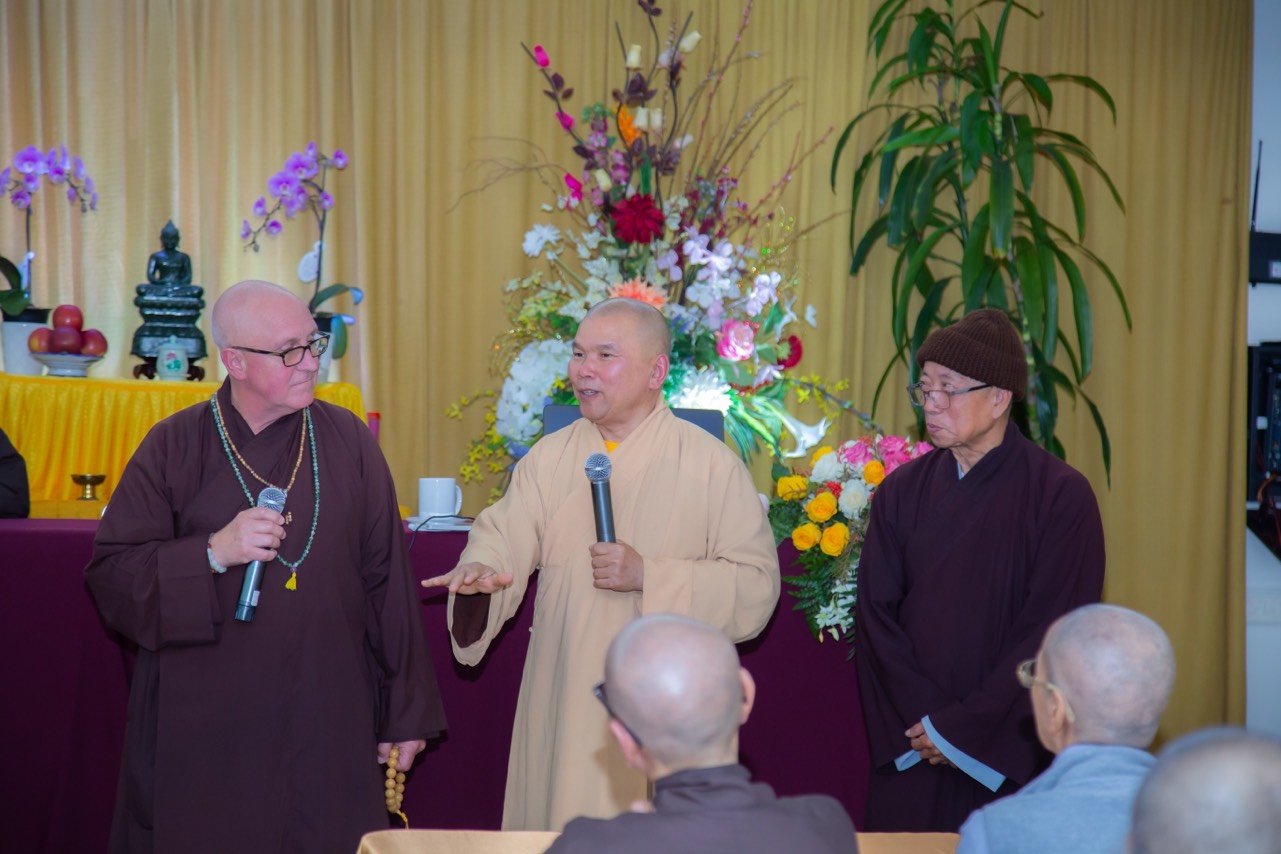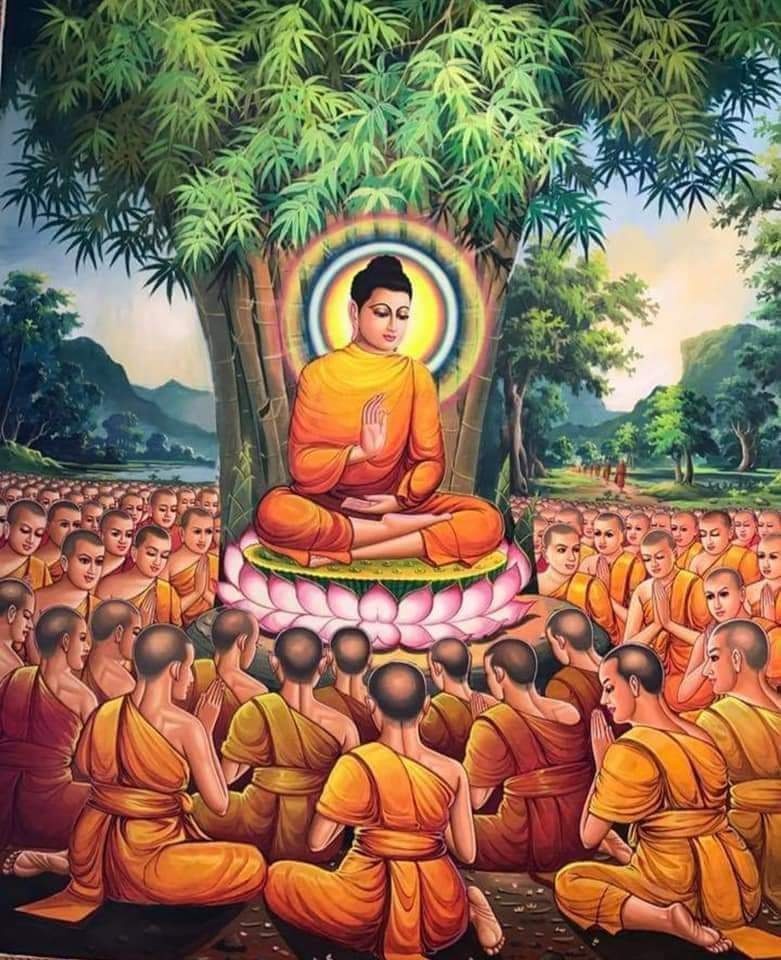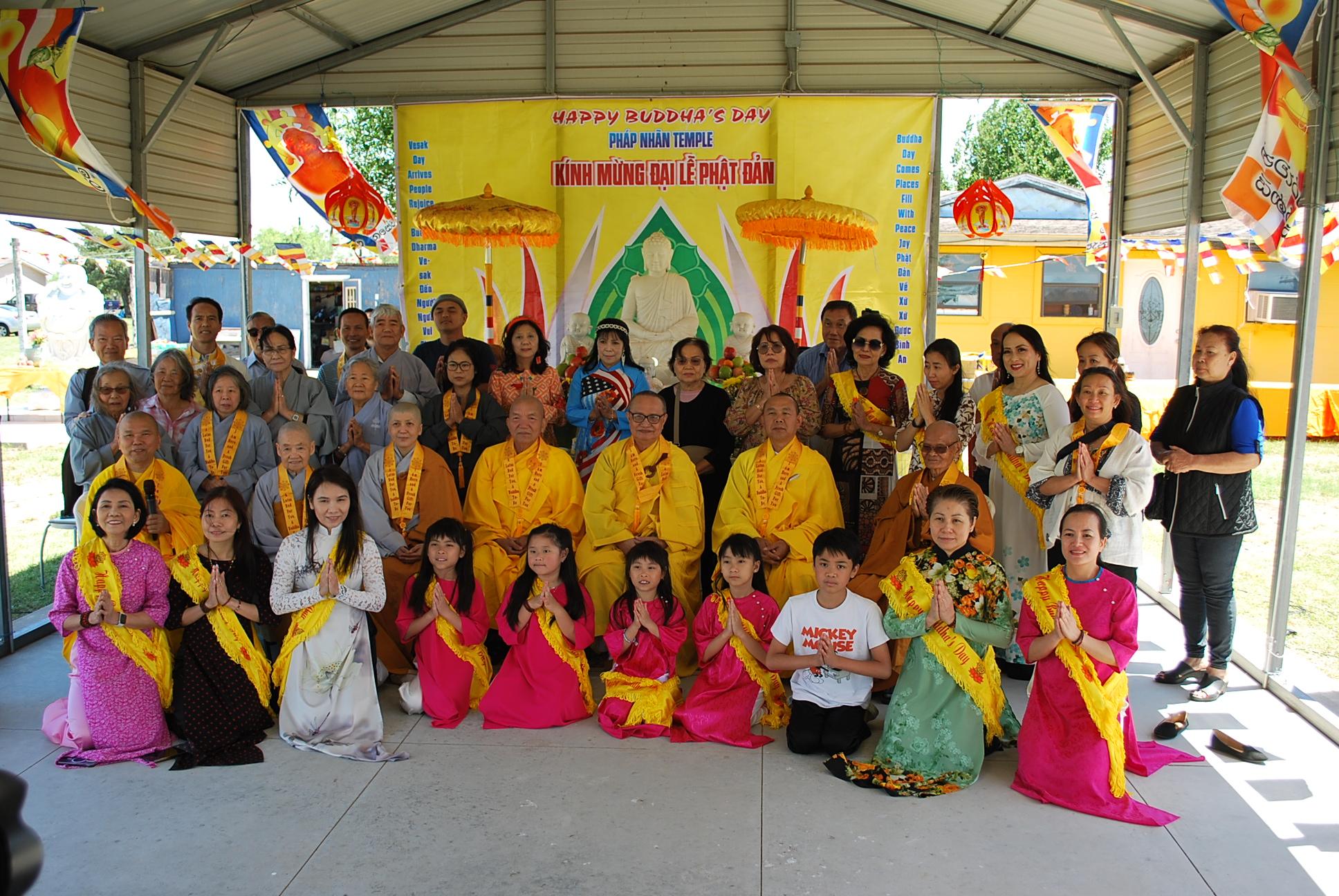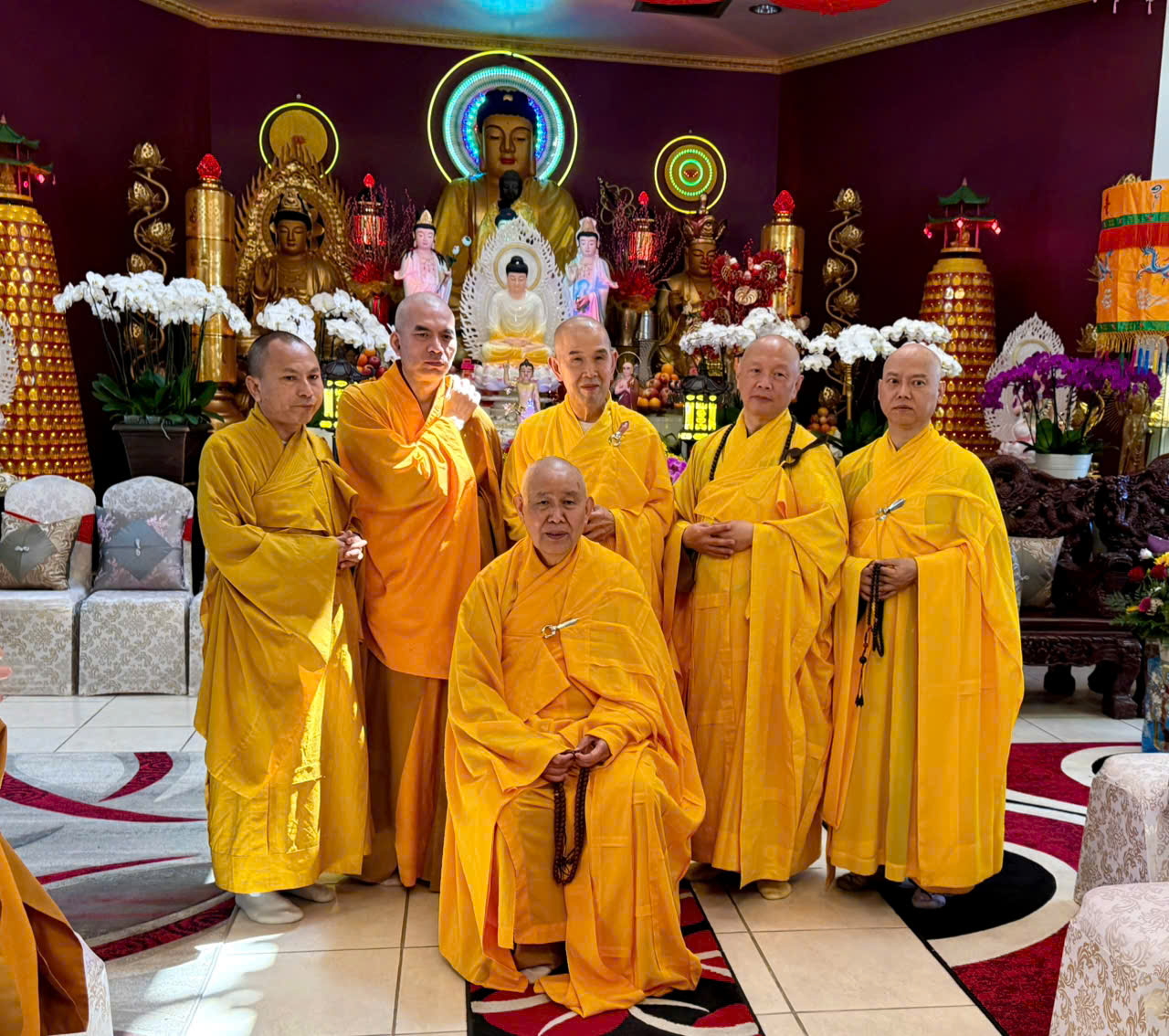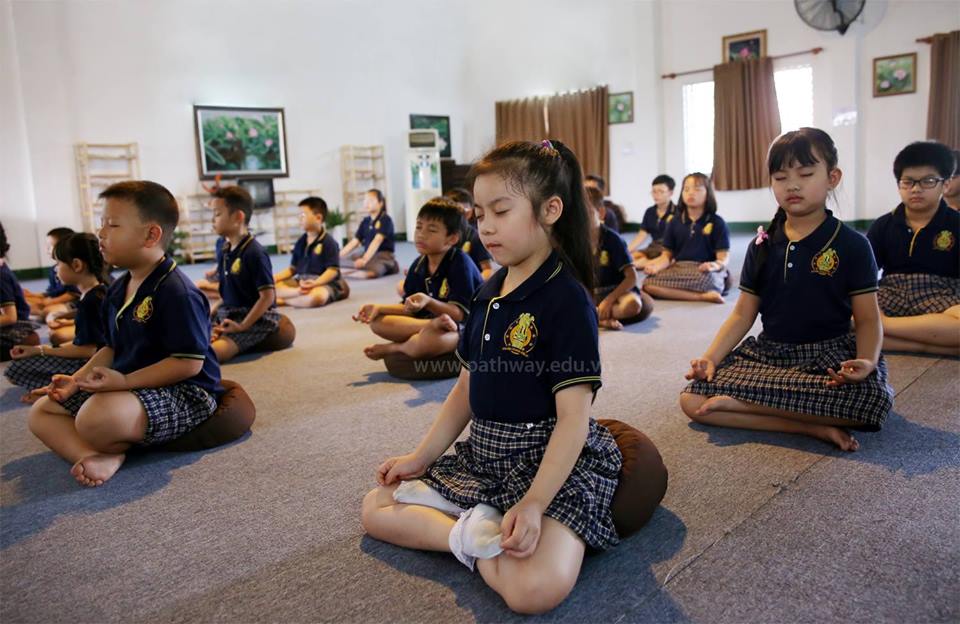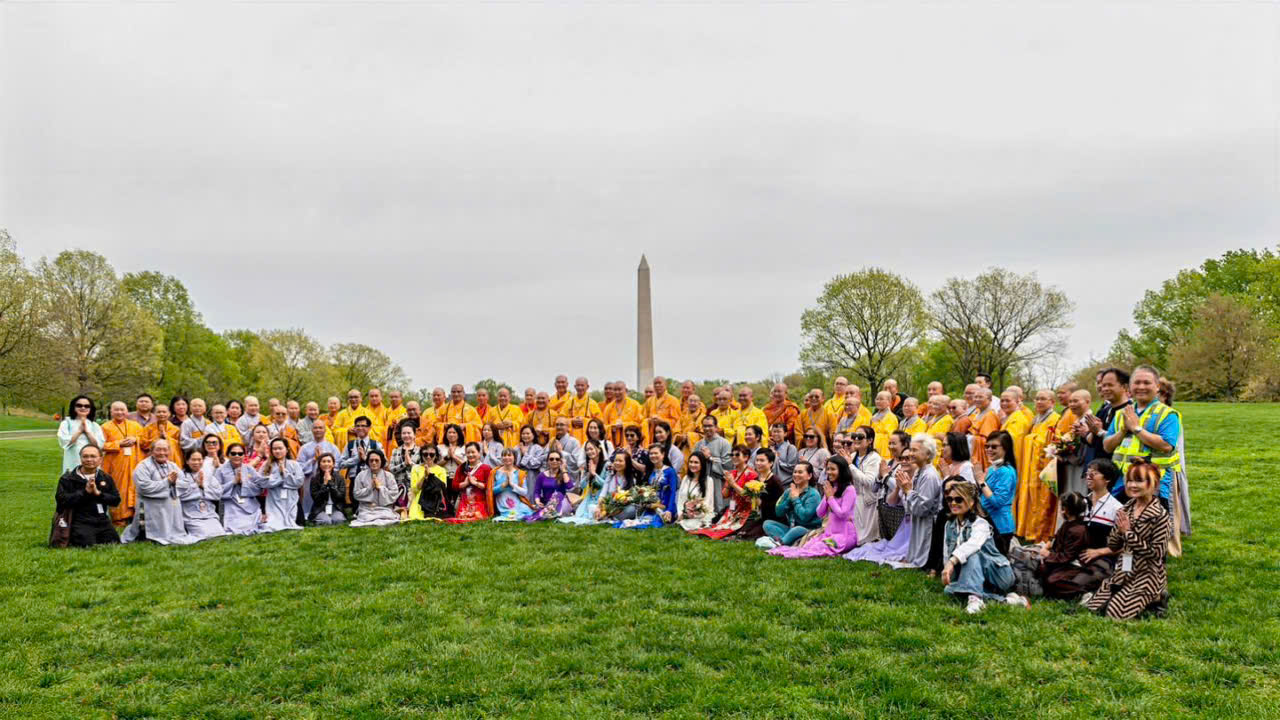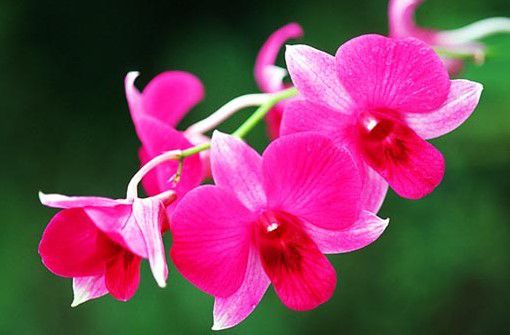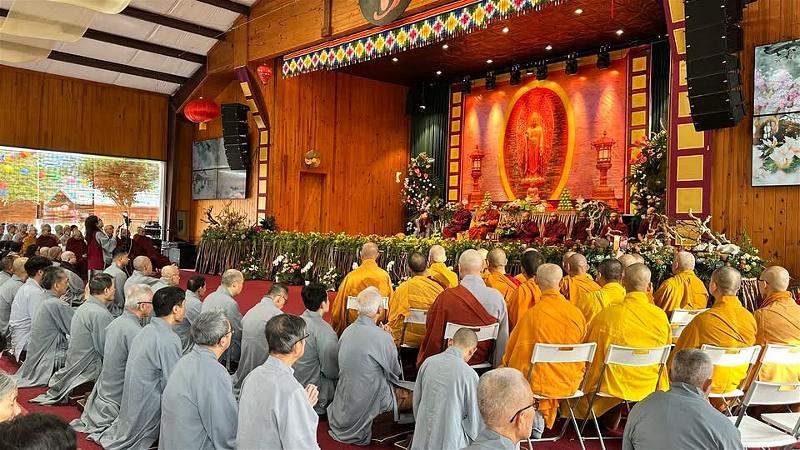
HAPPINESS SPRING
We know that a year with twelve months, a month with four weeks, a week with seven days and nights, a day and night with twenty-four hours, an hour with sixty minutes, etc., always elapses in every moment of our daily lives. Although time has constantly been elapsing, the Happy Spring is eternally present in you and in me, in families and in Dharma Centers, in all places, and everywhere.
The Happy Spring, called as the Spring of Maitreya Buddha or the Peaceful Spring, is authentically present in us. Whenever we are aware to keep control of our breaths, words, thoughts, and actions mindfully and consciously right here and right now in the present life.
Relying on the title of this writing, when encountering the word “Happiness,” we can find out it through varied aspects and angles, especially through Sutras, verses, thoughts, and the meanings of the Buddhadharma in the Dhammapada, Verse 194 as follows:
“Happy is the birth of the Buddha,
Happy is the noble Dhamma,
Happy is the harmonious Sangha,
Happy is the Fourfold Community in peace and concord together.”[1]
As you know, happiness gets felt via many various aspects and angles, but happiness which is felt best is happiness derived from “the body of peacefulness” and “mind of liberation” of each one of us. That is the most precious gift that we can offer it to ourselves and to our loved ones on occasion of the new Spring. Based on the above verse of Dhammapada, we discover the word “happiness” to be present in the Buddha’s teachings, we in turn learn more about its meanings below.
In Sanskrit or Pāli, happiness with its root is “Sukha.”[2] According to Monier-Williams (1964), “Sukha” has two separate words: “Su” and “Kha.” “Su” means “good” and “Kha” means “axle.” “Sukha” literally means “good axle.” For example, a vehicle with a good axle can run fast, far, and durably. Of course, it must still depend additionally on other factors such as wheels, gas, engine oil, etc. Likewise, when having “True Happiness,” we can practice the Dharma and transform unwholesome seeds into wholesome seeds. We can spread the cultivated hearts of loving-kindness, compassion, joy, and inclusiveness to all living things and living beings to help add happiness and alleviate suffering for life.
When performing so well, we have to have the methods of specific practice such as loving speech, deep listening, prostration of the Buddha, recitation of the Buddha’s names, Meditation practice in mindfulness and awareness daily to recharge our spiritual battery. From this, we can enjoy the peaceful taste of practice, we can bring the flowers and fruits of peaceful joy and happiness to the many right in the present life.
We know happiness; its revere is “unhappiness” and “suffering.” Cultivation is a process so that we can recognize and transform unhappiness and suffering into peaceful joy and happiness. In Buddhist terminology, the authentic meanings of “Sukha” is “True Happiness.” In the “Sutta of True Happiness,” (Mangala Sutta) the part V of Sutta-Nipāta, belonging to Khuddaka Nikāya, referring to the values of “True Happiness Sutta” we can learn, understand, apply, and enjoy its peaceful taste of the Buddhadharma from the early Spring of the New Year up to the end of Spring of life. With our joyful and relaxed minds, we would like to invite you all to read and contemplate the “Sutta of True Happiness” together happily.
“Thus have I heard. Once the World-Honored One was dwelling in Savatthi at Jeta’s Grove, Anathapindika’s garden. When the night was nearly ended, there was a certain deity with his surpassing radiance who illuminated the entirety of Jeta’s Grove, approached and bowed down to the World-Honored One. After having paid homage to the World-Honored One, the deity stood at one side and addressed the World-Honored One in verse as follows:
Deities and human beings
That think about happiness,
Wish to obtain happiness
What is true happiness?
Invite the World-Honored One to teach it.
He replies with the verse:
Avoiding the foolish,
Associating with the wise,
Paying homage to those who are worthy of homage,
This is true happiness.
Choosing a wholesome place to reside,
Having made merits in past life,
Keeping one’s heart right and straight,
This is true happiness.
Understanding broadly and being skillful in handicraft,
Observing the Precepts perfectly,
Talking together with loving speech,
This is true happiness.
Serving mother and father,
Cherishing spouse and children,
Not being attached to trouble,
This is true happiness.
Giving and living in integrity,
Helping one’s relatives,
Deeds are no blameful,
This is true happiness.
Preventing evil,
Giving up intoxicants,
Being assiduous in the right way,
This is true happiness.
Being respectful and humble,
Knowing contentment and gratitude,
Learning the Dhamma on timely occasions,
This is true happiness.
Being patient and obedient,
Visiting monks and nuns,
Discussing the Dhamma on timely occasions,
This is true happiness.
Being pure and diligent,
Understanding the Noble Truths clearly,
Carrying them out and being happy with Nibbana
This is true happiness.
Being in touch with the world,
Keeping one’s mind unshaken,
Sorrowless, dustless, and peaceful,
This is true happiness.
Those who train in the aforesaid teachings like that,
Can easily achieve anything,
Live peacefully in any place.
This is true happiness.”[3]
Via the “Sutta of True Happiness,” we know happiness has the authentic values when it gets felt by our peaceful bodies and liberated minds. We can rewrite this as “happiness about our bodies” and “happiness about our minds.”
“Happiness about our bodies” means when making human bodies, we are fortunate to have full hands, legs, eyes, ears, nose, tongue, etc. Via applying and practicing the Buddhadharma daily, we can enjoy the Dharma happiness when our hands and legs have enough health to walk in meditation, sitting in meditation in mindfulness. Our eyes are still bright to see our loved ones being present and helping each other. Our ears are still clear to listen to the Dharma talk and hear bird singing. Our noses are still healthy to breathe in and out mindfully and consciously. Our tongues are still healthy to taste the flavors of Dharma happiness.
Moreover, “happiness about our bodies” means we are aware to observe living things and living beings, protect human properties, live a life of peaceful joy and happiness by saying words of usefulness, love, cuteness to everyone and every home. Aware not to take varied kinds of narcotics, wine, beer, smoking, consumption of violent and depraved films, photos, and newspapers. We should spend time doing charitable activities such as devotion to building bridges, roads, helping poor students, and lonely and needy families. Thus, “happiness about our bodies” means we live and do the benefits for others and ourselves right in the present life.
On the other hand, through learning, understanding, applying, and enjoy the Dharma joy and Dharma happiness in the daily life, “happiness about their bodies” is not only intended for those having enough hands, legs, eyes, ears, noses, etc., but also for those lacking one of their most precious parts. Unfortunate people who can also approach the Buddhadharma from an instructor whether hear it by ears, say and sing it by their mouths, or feel it by their minds, etc., so they can enjoy the Dharma happiness from themselves.
The instructor of the Buddhadharma, who can be a monastic, lay person, a teacher, or a volunteer, instruct practitioners to go to the shore of coolness, fragrance, that is, to that of peaceful joy and happiness. That instructor, who can be a Maitreya Buddha, loves and understand, lives with his/her heart of joy, inclusiveness, and lives for others.
Next is “happiness of our minds;” “happiness of our minds” means we have enough good conditions to learn, understand, practice the Dharma, and enjoy the feelings of its peaceful joy. We can cultivate and transform the unwholesome seeds of our minds, such as the seeds of sorrow, anger, greed, envy, delusion, etc., and we can cultivate and water the wholesome and good seeds of our minds, such as the seeds of loving-kindness, compassion, joy, and that of equanimity, etc.
Via what are above discussed things, the bodies and minds are divided like this, is to help us easily understand, but in fact, human body and mind are an only unique entity inseparably like water and waves, like image and its shadow. Happiness of the body is that of the mind, and vice versa, happiness of the mind is also that of the body. Cultivation is for us to achieve peaceful joy and happiness from our well-practiced bodies and minds. The peaceful body is the peaceful mind, and vice versa, the peaceful mind is the peaceful body. If our bodies and minds are not peaceful, however hard we try, we never obtain happiness.
As the Buddha’s disciples, we frequently learn and apply his practical teachings in our daily lives in other that we can offer the “Happy Spring” to others and ourselves right in the present life. To describe the additional meanings of our bodies and minds, please enjoy a “Poem of Happiness” of a Nun praising the luck for being happy people below happily.
“How wonderful the World-Honored One is!
His loving-kindness and compassion spreading all over place,
Granting living beings joy of life,
Giving us happiness to make human bodies.
Listening to the Dharma to alleviate grief and suffering,
Destroying ignorance to let one’s mind be illuminated by wisdom,
Happiness in a myriad of happiness,
Making people be the happiest in the world.” [4]
Moreover, in the verse 194 of the Dhammapada mentioned above, we can find the word “happiness” is present in the whole of the verse. The first line of this Dhammapada verse is that “Happy is the birth of the Buddha.” We know the purpose of the Buddha’s birth is to bring peaceful joy and happiness to gods and living beings. The Buddha, the Fully Awakened or Enlightened One, can be understood as the Sakyamuni Buddha and can be also understood the Maitreya Buddha in the context of Spring, Tết.
In the context of the Spring, we can understand the Maitreya Buddha as the happy Buddha, who appears in the first day of the New Year to bring peaceful joy and happiness to everyone and every family. Practicing the Buddhadhamma diligently, we each can be each Maitreya Buddha to dedicate the Happy Spring to many people.
“The Buddha is the Teacher showing the way,
The fully Awakened One,
Whose noble and respectable signs,
Perfect wisdom and compassion.”[5]
The second line of the Dhammapada verse is that “Happy is the Noble Dhamma.” The Noble Dhamma means the Noble Truth of Suffering (Dukkha-Ariya-Sacca), the Noble Truth of the Origin of Suffering (Dukkha-Samudaya-Ariya-Sacca), the Noble Truth of the Cessation of Suffering (Dukkha-Nirodha-Ariya-Sacca), and the Path leading to the Noble Truth of the Cessation of Suffering (Dukkha-Nirodha-Gāminī-Paṭipadā-Ariya-Sacca).[6] The Dhamma has the ability to lead us to the Spring of authentic Happiness for others and for us. If we practice and apply the Dhamma mindfully in our daily lives, we can bring peaceful joy and happiness to many people. Therefore, the Buddhadhamma is called as “beyond time, practical in the present, avoid afflictions, come and see, come and hear, come and understand, come and practice, and come and enjoy the taste of the Dhamma peace and joy.”[7]
Indeed, “the Noble Dhamma” also means whenever we apply and practice it assiduously in our daily lives, we can reap the fruits and flowers of peaceful joy and happiness practically in the present life.
“The Dhamma which is the bright way,
Leads people to escape the realm of delusion,
Leads them to coming back one’s spiritual homeland,
In order to live a life of awakening.”[8]
The third line of this Dhammapada verse is that “Happy is the harmonious Sangha.” The Sangha are the World-Honored One’s disciples, spiritual Practitioners, who vow to lead their lives of peaceful joy and awakening, vow to follow the path of his peace, enlightenment, and liberation, and vow to look after and nourish sisterhood, brotherhood, teachers, and students. “The harmonious Sangha” consist of monastic and lay people vowing to learn, understand, practice, and apply the Buddhadharma into their daily lives to bring the benefits to many people.
“The Sangha that are the beautiful Community,
Travel on the joyful path together,
Cultivate to be freed from defilements
In order to make life beautified.”[9]
The fourth line of this Dhammapada verse is that “Happy is the fourfold Community in peace and concord together.” The fourfold Community consist of Buddhist Monks, Nuns, lay men, and lay women. All of them are the World-Honored One’s monastic and lay disciples practicing the Buddhadharma together to beautify life.
“Disciple taking refuge in the Three Jewels,
Knows the Three Jewels of one’s own mind,
Vows to practice the Buddha’s teachings diligently
To make the mind be illuminated by the Three Jewels.”[10]
Thus, we see the “the Happy Spring” also means the “Spring of the Lamp Transmission.” “The Lamp Transmission” means we together transmit the light of love, happiness, and that of peaceful joy to all living things and living beings. We together light up the lamp of the Dhamma, light up the lamp of compassion and peace. All of us are bearers of the Dharma lights for the many right in the present life. When understanding and practicing so, we can contribute to bringing peace, joy, and happiness to many people. To express our hearts to esteem and respect the Three Jewels, please enjoy reading the poem of the Happy Spring below happily.
“The Happy Spring is gentle clear green,
The wind brings the drifting clouds quickly
Each flock of birds gathers together Celebrating the coming Spring welcomes people to the festival.
Kneeling sincerely down in this solemn place,
One’s respectful heart is forwarded to the Three Jewels,
Praying for the noble Sangha Body,
Living in harmony to spread the Dhamma Path.
Wishing for all places of peace and joy,
Escaping from ignorance to find out liberation,
and praying for families and relatives today,
The full health, the happy reunion of the Dhamma,
Together aspiring to ancestors and parents,
Penetrating the Dharma to keep away from the evil path.
The Spring coming resounds, resounds,
With joy of eagerness in how dear,
Life is fresh and joyous as one’s heart blossoms,
Feelings of bliss are full of the Buddha,
Who leads us to the Dhamma,
Boundless love of all sounds of singing.
Despite tomorrow, when years and months pass,
One still steps on the path of the Buddha,
Whose love is eternally forever,
The Buddha in one’s heart is the source of warm sunshine.
Celebration of Spring coming, we sing the Dharma songs,
Welcoming the New Year, we are happy together with all families.”[11]
On the threshold of the New Year, turning our sincere minds to our Parents, Teachers, Patriarchs, the Buddha, his Wonderful Dharma, and harmonious Sangha, we would like to wish Monastics, lay Buddhists, and everyone happiness and health in the Dharma learning, Dharma understanding, Dharma practice, Dharma joy, Dharma protection, and Dharma propagation.
Celebration of the Happy Spring in the present,
People are full, warm, and families are happy.[12]
Namo the Maitreya Buddha with joy, peace, and happiness.
By Thích Trừng Sỹ
[1] Dhammapada, Verse No. 194.
[2] http://en.wikipedia.org/wiki/Sukha
[3] See Mahamangala Sutta, Sutta Nipatta II. 4 in Khuddaka Nikāya.
[4] The Happy Poem of Nun Thích Nữ Tắc Phú.
[5] Zen Master Thích Nhất Hạnh’s poem.
[6] M. I. 185; MLD. I. 278.
[7] See The Path of Purification (Visuddhimagga). Bhikkhu Ñāṇamoli translated Pāli into English. Sri Lanka: Buddhist Publication Society, 5th Edition 1991, Reprinted 1999, Chapter VII, 68-88: 209-215.
[8] Zen Master Thích Nhất Hạnh’s Meditative poem.
[9] Ibid.
[10] Zen Master Thích Nhất Hạnh’s poem.
[11] Ullambana 2007, the Poem of “Respectfully Offering Mother,” of the author Nguyễn Nguyệt. In this poem, the writer has changed some words in conformity with the context of the Spring, and respectfully expects the author of this poem to understand and sympathize with him, who lovingly wishes the author to be happy with the Spring.
[12] The writer, practicing making a poem for joy, harmonizes with life to be happy together with the Dhamma.




